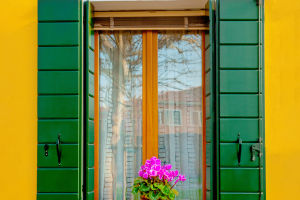Ceramics
Ceramics is a diverse field that includes pottery made from rough clay, as well as porcelain made from porcelain or kaolin clay, which is fine and white with high density and hardness.
Apan's 47 prefectures produce various ceramic foodware, which are typically named after their place of origin and firing, such as Iwanri-yaki, Karatsu-yaki, and Mino-yaki.
Arita-yaki, located in Saga Prefecture, is famous worldwide and is the birthplace of porcelain clay in Japan, with firing dating back to the 16th century.
As porcelain is made in the Arita area and then exported through the port of Ivory, it is also known as Ivoryaki and is one of the three most famous ceramics locations in Japan.
Arita-yaki was significantly influenced by China's blue and white porcelain of Jingdezhen. The initial style was white with blue flowers, and the porcelain was light and white, making it popular tableware in Japan.
Arita-yaki is crucial to Arita, and the local Taoyama Shrine not only worships the god of pottery, but also important structures like torii are made of Arita-yaki. Besides the types of Arita-yaki from the Edo period in Japan, the typical Arita-yaki products are made using a variety of techniques such as hand-painted glaze, painted glaze, appliquéd paper, sprayed color glaze, and gold paint.
The product style is colorful and gorgeous, and Arita-yaki's charm lies in its thin texture and smooth lines. However, the material itself is incredibly durable, hard, and non-absorbent, making it ideal for use as an eating utensil.
Currently, the four relatively well-known Japanese porcelain production areas in China are Mino, Arita, Bosami, and Kutani, with Arita and Bosami still featuring some brands while Mino and Kutani mainly focus on the origin.
Kiyomizu-yaki is produced in the Kyoto region of Japan and is also known as Kyoyaki. It is entirely handmade from Kyoto clay, with a history dating back 1,200 years, and was designated as a traditional Japanese craft in 1977.
Kiyomizu-yaki is known for its delicate painting techniques and rich glaze colors, with each division of labor, from rough clay to the creation of stunningly beautiful works, being complicated and requiring careful attention to maintaining the porcelain's quality.
The works produced by Kiyomizu-yaki include food and tea utensils, as well as ritual objects, with tea utensils being the most famous. Some of the finest Kiyomizu-yaki pieces are thin and delicate, with a quiet and Zen-like shape, while others are richly glazed, making them very ornamental and expensive.
Shino is regarded as a national treasure pottery in Japan, and its works are mostly tea ware, fired using feldspar glaze and then pressed into shape by hand or brush. This porcelain is characterized by a translucent gelatinous surface, while the interior shows the natural rugged, antique pattern texture of the object, showing a slightly red or greenish-gray orange peel-like effect.
Shino is also known for its warm and rustic appearance, with its uneven texture and earthy tones, making it a popular choice for tea ceremony enthusiasts.
Ceramics have always been an integral part of Japan's culture and heritage. Japanese ceramics are highly valued for their exquisite designs, durability, and functionality. The art of making ceramics has been passed down from generation to generation, and it continues to evolve, with new techniques and styles being developed.
Each region in Japan has its unique style of ceramics, making it a fascinating area to explore and discover the cultural significance of these ceramics


